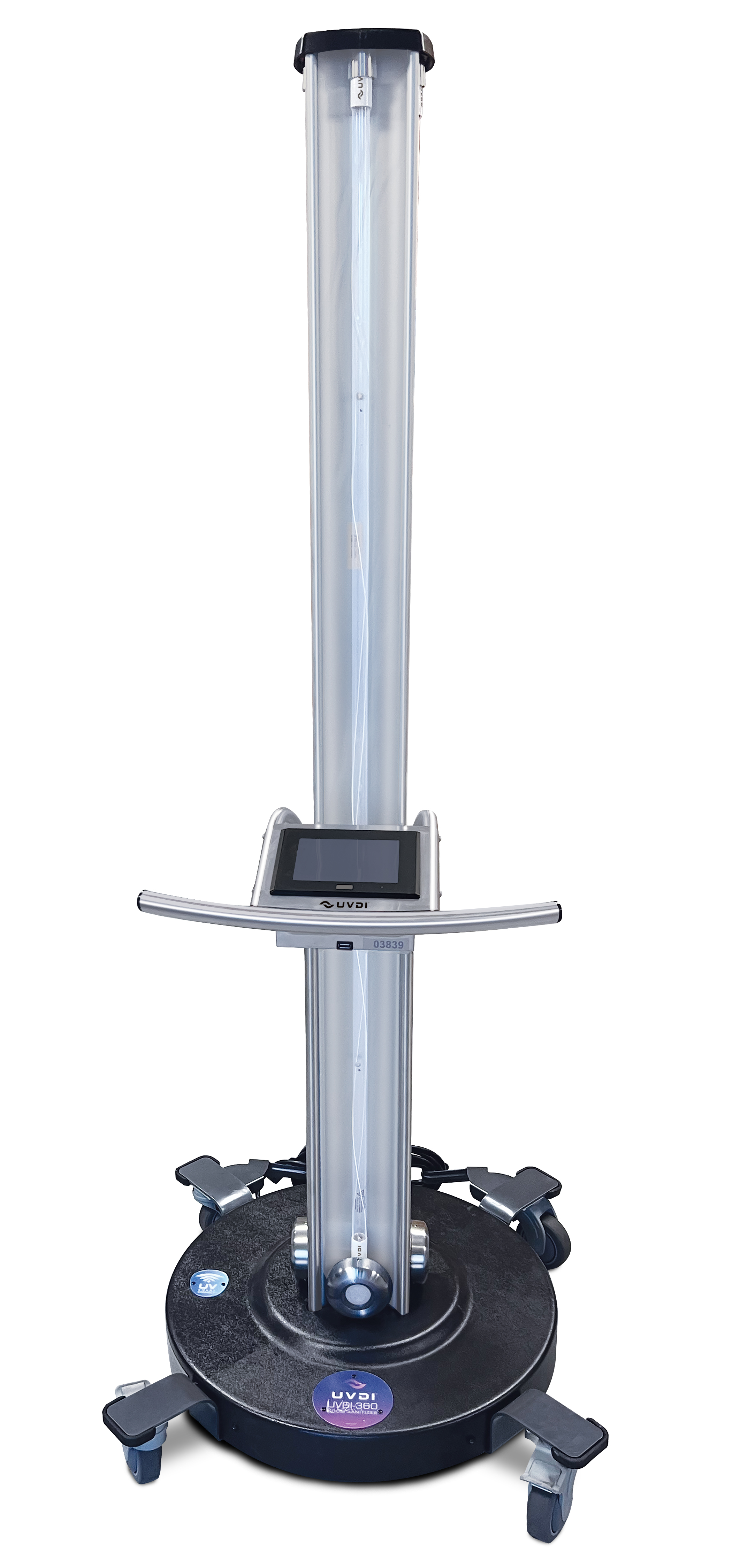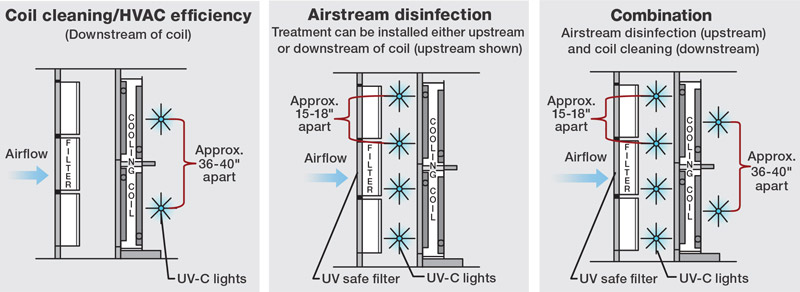Harnessing the Possible of UV Disinfection: Shielding Health And Wellness and Health
UV sanitation, a technology commonly made use of in various markets, has actually proven effective in getting rid of harmful microorganisms. From understanding the mechanisms at play to executing this modern technology in our daily lives, this discussion aims to lose light on the possibility of UV sanitation and its function in guarding our health and hygiene.
Comprehending UV Sanitation
UV sanitation is a very reliable and widely made use of method for eliminating dangerous virus and guaranteeing health and health. This technique makes use of ultraviolet (UV) light to suspend microorganisms by damaging their DNA and avoiding them from recreating. UV sanitation is specifically reliable against microorganisms, viruses, and various other microbes that can create infections and illness.
The concept behind UV sanitation is simple yet effective. When UV light is discharged at a specific wavelength, it permeates the bacterium's cell wall surface and disrupts its genetic material. This procedure, understood as photodissociation, results in the formation of thymine dimers, which prevent the microbe from reproducing and providing it harmless. UV disinfection can be applied in various settings, including water therapy plants, health care centers, food handling markets, and air purification systems.
Among the advantages of UV sanitation is its capacity to successfully and efficiently get rid of a large range of microorganisms without the requirement for additives or chemicals. Unlike various other sanitation techniques, such as chlorine or ozone, UV disinfection does not present damaging by-products or chemical residues into the environment. Additionally, UV sanitation is a non-contact procedure, which indicates that it does not need physical call with the bacteria, minimizing the risk of cross-contamination.

The Science Behind UV Sanitation
The performance of UV sanitation lies in its ability to interrupt the hereditary product of microorganisms, providing them incapable to replicate and consequently removing their unsafe possibility. UV, or ultraviolet, radiation is a type of electro-magnetic radiation with wavelengths much shorter than noticeable light. It is classified right into 3 kinds: UV-A, UV-B, and UV-C. UV-C radiation, especially, has the quickest wavelength and the highest possible power. Due to the fact that it can permeate the cell walls of microbes and damage their DNA or RNA., this high-energy UV-C radiation is most effective in disinfection applications.
When bacteria are exposed to UV-C radiation, the power is absorbed by their genetic material, causing bonds to break and developing chemical responses that disrupt their capability to reproduce. This stops the microorganisms from spreading out and reproducing infection. UV sanitation is especially effective against infections, microorganisms, and fungis, consisting of common pathogens such as Escherichia coli, Salmonella, and Influenza.
The scientific research behind UV sanitation is supported by considerable research study and studies. It has been shown that exposure to a sufficient dose of UV-C radiation can accomplish a high degree of disinfection, commonly going beyond 99.9% efficiency in killing microbes. It is important to note that the efficiency of UV sanitation depends on various aspects, consisting of the intensity of UV-C radiation, exposure time, range from the UV source, and the vulnerability of the microorganism to UV radiation (uv surface disinfection).
Applications of UV Sanitation
Given the substantial research and efficacy of UV disinfection in interfering with the genetic material of microbes, it is essential to discover the numerous sensible applications of this innovation. UV disinfection has actually confirmed to be a valuable device in a large range of industries where keeping a tidy and secure setting is important.
One significant application of UV disinfection is in health care setups. UV light can be used to sanitize surface areas, devices, and even the air in healthcare facilities and medical facilities. This aids to decrease the risk of healthcare-associated infections and makes certain a much safer atmosphere for people and healthcare employees.
An additional crucial application remains in the food and drink industry. UV disinfection is utilized to deal with water and eliminate hazardous pathogens, such as E. coli and Salmonella, from the production procedure. uv surface disinfection. This ensures the safety and quality of the items we eat
UV disinfection is likewise widely used in water treatment plants and wastewater treatment centers. It is a reliable approach for ruining hazardous microorganisms, viruses, and bloodsuckers that can be present in water resources. This assists to offer secure and tidy drinking water to areas and safeguard the environment from air pollution.
In addition, UV disinfection is utilized in the pharmaceutical market to sanitize tools and preserve the integrity of products. It is additionally made use of in laboratories and research facilities to avoid contamination and guarantee accurate results.
Advantages of UV Disinfection Innovation
One noteworthy benefit of employing UV disinfection technology is its capability to properly eradicate microorganisms without making use of severe chemicals. This is specifically useful in numerous setups, such as healthcare facilities, water treatment plants, and food handling industries, where the existence of damaging virus postures a considerable threat to public health and safety.
Unlike conventional disinfection techniques that rely upon chemicals like chlorine or ozone, UV sanitation innovation makes use of ultraviolet light to target and ruin the DNA of microbes, properly counteracting their capability to replicate and create infections. This process not just eliminates the need for possibly image source unsafe chemicals yet likewise lowers the risk of chemical residue or results staying in the cured environment.

Furthermore, UV disinfection technology is eco pleasant. As it does not count on using chemicals, it removes the need for their manufacturing, disposal, and transport, reducing the total carbon impact related to disinfection procedures. Furthermore, UV sanitation systems have a Homepage longer life expectancy compared to chemical-based approaches, causing less constant substitute and more decreasing waste.
Executing UV Sanitation in Daily Life
To efficiently carry out UV disinfection in life, companies and individuals can integrate portable UV disinfecting tools into their hygiene routines and cleansing techniques. These tools are made to give off ultraviolet light, which has actually been verified to kill or inactivate a large range of bacteria, consisting of fungis, germs, and viruses. By utilizing mobile UV disinfecting gadgets, people can sanitize typically touched surfaces and things, such as cellular phone, laptops, keys, and doorknobs, reducing the danger of spreading germs and infections.
Along with integrating portable UV sterilizing devices, it is essential to adhere to proper standards and suggestions for effective UV sanitation. This includes ensuring that the gadget is used properly and for the suggested duration to achieve optimum disinfection results. It is likewise essential to prioritize safety actions, such as putting on safety eyewear and staying clear of straight exposure of the UV light to the skin.

Additionally, organizations can apply UV sanitation modern technology in numerous setups to boost health methods. Healthcare facilities and health care centers can make use of UV sanitation robotics to disinfect patient areas, operating movie theaters, and other high-touch areas. Food processing industries can incorporate UV sanitation systems right into their assembly line to improve food safety and protect against contamination.
Verdict
In verdict, UV disinfection modern technology holds great prospective in safeguarding health and hygiene. With its various benefits, UV sanitation is a valuable tool for maintaining a healthy and clean setting.
Unlike other sanitation approaches, such as chlorine or ozone, UV sanitation does not present dangerous by-products or chemical residues right into the setting. It is essential to keep in mind that the effectiveness of UV disinfection depends on numerous elements, including the strength of UV-C radiation, exposure time, range from the UV resource, and the susceptibility of web the microorganism to UV radiation.
One more advantage of UV sanitation innovation is its capability to offer rapid and continuous sanitation. Unlike handbook cleansing techniques, which can be lengthy and require considerable labor, UV disinfection systems can be automated and run continuously, making certain consistent sanitation without human treatment.To effectively carry out UV disinfection in everyday life, people and companies can include mobile UV sterilizing devices into their health routines and cleaning up practices.